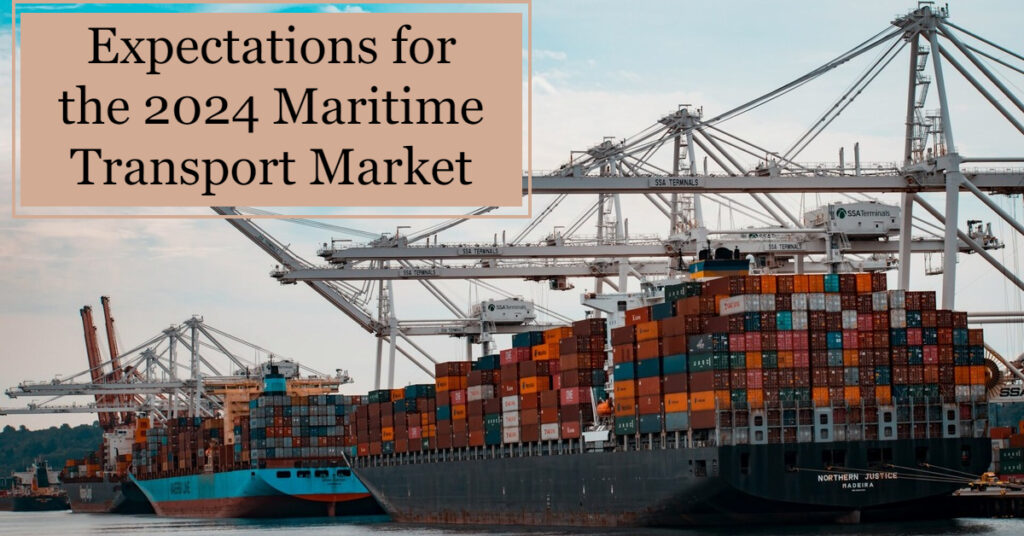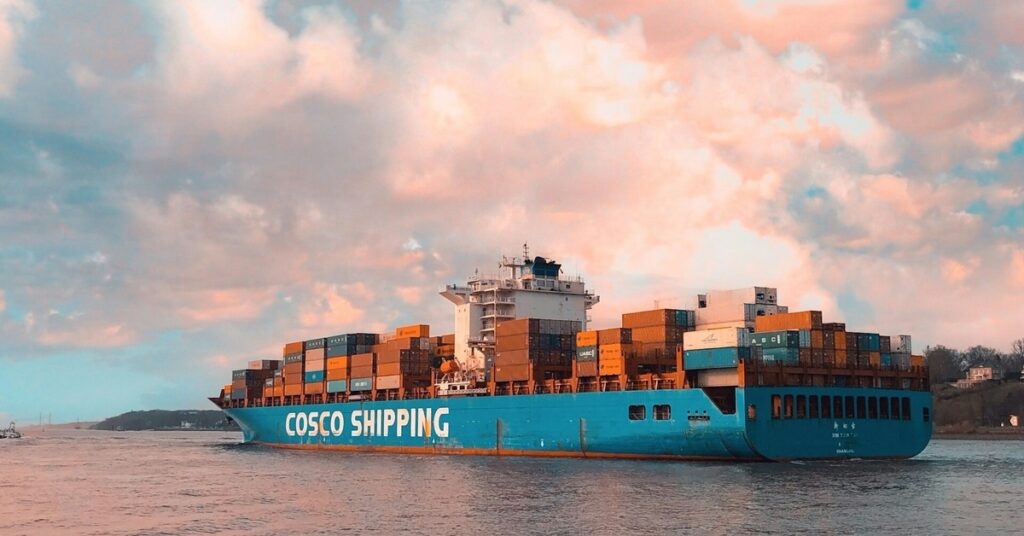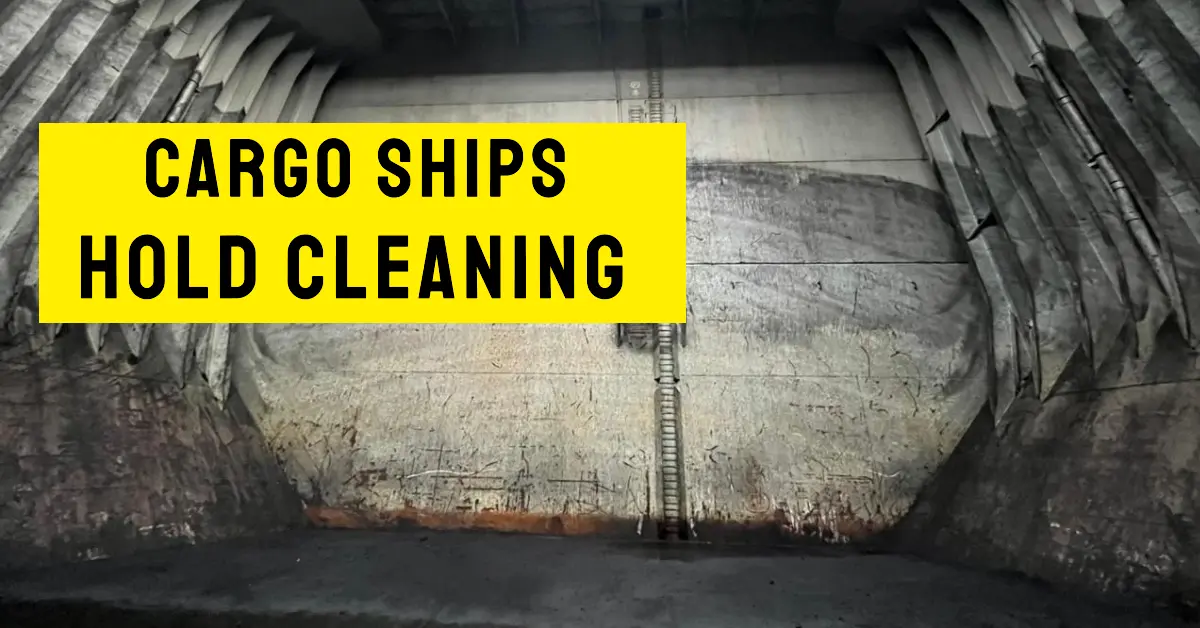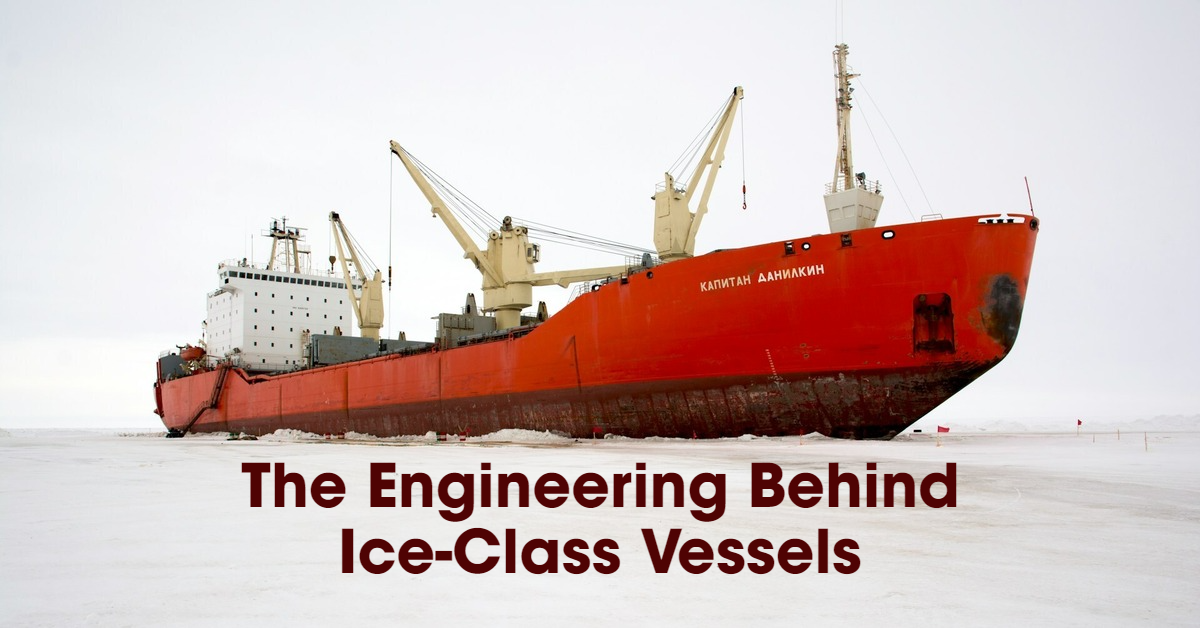What do experts expect the 2024 maritime transport market to look like? Recent international events have disrupted supply chains and changing regulations keep industry leaders on their toes in a rush to innovate more sustainable transportation solutions.
Understanding the factors affecting sea transport and supply chains lends insight into rising prices and how world trade operates. A closer look at expectations for the 2024 maritime freight market will help everyone make better-informed decisions to keep the products that aid society moving across the ocean.

Global Economic Outlook and Trade Trends
The COVID-19 pandemic was the catalyst for widespread supply chain disruptions. The following price shifts caused millions of workers to struggle to afford the basics, igniting labor disputes that further impacted global trade. This situation led to a slowdown in overall shipping. Although the 2023 maritime transport figure remains unconfirmed, experts estimate total container traffic decreased by 14% in 2023 over 2022.
Other factors also influence global trade, including increasing sustainability concerns. These affect the maritime transport industry in several ways. On one end, shipping companies must expend funds to upgrade vessels in compliance with growing international regulations. On the other, consumers may gradually shift toward more locally produced goods to reduce their carbon footprints, decreasing demand.
However, certain global areas will always have the unique resources, machinery and knowledge to produce them, ensuring the maritime freight market will continue to grow. The Conference Board predicts a 0.8% growth in the U.S. GDP in 2024. Increasing exports may further propel the nation’s economic recovery, which will, in turn, drive rising consumer engagement.
Technological Advancements and Innovations
Technological advances affect every industry, including shipping. Brands continually strive for improvements that increase profitability, sustainability and efficiency. Various factors come into play — for example, improving loss control prevention improves the bottom line while reducing waste.
Various losses occur across multiple stages of the supply chain. In shipping, the most common loss drivers or sunken and submerged vessels, fires or explosions and vessel collisions. Vessels becoming wrecked or stranded and machinery facing damages or failure can also occur. Hulls may additionally become damaged with holes and cracks.
Sometimes, sea transport disasters create a ripple effect. For example, the 2021 vessel that became grounded in the Suez Canal spent six days blocking traffic to other ships, interrupting global trade. The present war in the Middle East threatens this and other area trade routes anew. Unpredictable tensions between nations could throw a wrench into the maritime freight market, putting additional pressure on crews.
Risk management is a crucial aspect of loss prevention, and crews must perform routine assessments to identify potential hazards like international tensions blocking routes and mitigate them. However, it’s tough to predict what may happen in war, so focusing on other methods of reducing loss may prove equally valuable.
For instance, packing and labeling of goods ensures safe transport, as well as tamper-evident seals to minimize theft. Officials can also implement stricter inventory control methods and regularly inspect shipping facilities and equipment to mitigate preventable hazards. Training is also essential for teaching proper handling and transportation procedures to shipping personnel.
Technological Tools and Loss Prevention
Ship captains and crews in the maritime freight market have more weapons than ever in their arsenals to minimize and prevent loss. Innovations help monitor goods and reduce damage from shore to shore, such as ships equipped with automated sensors and advanced navigational systems maneuvering captains around problems and improving safety and efficiency. Blockchain technology also creates a tamper-proof data chain to track cargo and finance, while the Internet of Things (IOT) enables real-time monitoring of vessels, cargo conditions and fuel consumption, ultimately optimizing performance.
Furthermore, improved cybersecurity measures protect against digital attacks to guard vessels, ports and supply chains against hackers. Augmented reality additionally improves training for high-pressure situations without risking the life or health of trainees. Digital twins can act as virtual replicas of physical ships for simulating and optimizing operations, monitoring performance, and predicting system maintenance requirements. Finally, smart ports increase connectivity with ships and automate cargo handling processes.
Sustainability also intersects with technological innovation. Going green isn’t a matter of complying with regulations but offers a valuable pathway to a world with less conflict and pollution. Innovations such as LNG-powered vessels reduce fossil fuel reliance as technology continues to perfect such mixtures from biofuels that rely on the breakdown of waste. Ships could one day depend on garbage instead of oil for power generation.
Regulatory Landscape and Compliance Issues
Of course, the need to address climate change is an international concern that affects all parts of the supply chain, including the maritime freight market. It often manifests through increased regulation and compliance requirements that those in the sea transport industry must meet to continue legally doing business.
The potential damage the maritime transport industry can do to the environment stems from multiple causes. Understanding them lends insight into the legislative landscape and the spirit behind new regulations. For example, atmospheric pollution affects climate change through greenhouse gas emissions, particularly sulfur and nitrogen oxide from marine diesel exhaust. Localized air pollution occurs when ships dock at port. While rare, oil spills cause extensive environmental devastation, are difficult to clean, and can linger for years in sediments and marine environments.
Wastewater — including greywater and blackwater — can contaminate fisheries and shellfish beds, and devastate human health. Ballast water discharge introduces foreign — sometimes invasive — plants, animals, bacteria and viruses into new environments. Sound pollution and wildlife collisions directly impact migratory species and threaten the extinction of whales and other marine creatures.
Multiple international laws govern how various states address such issues, as pollution impacts the entire planet. The United Nations Convention on the Law of the Sea (UNCLOS) and the International Maritime Organization Convention (IMO) — a specialized UN agency — are the predominant governing organizations. Within the IMO, the International Convention for the Prevention of Pollution for Ships (MARPOL) outlines pollution regulations.
UNCLOS Article 94 (5) requires ships to adhere to such regulations, and Port State Control gives member states the right to inspect foreign ships to ensure they meet these international guidelines. Inspectors can detain vessels that fail to pass, often at significant cost to the ship owner. They must correct deficiencies, address the demurrage that occurs from ships left mired at port, and pay for any legal proceedings arising from malicious acts or negligence.

The high cost factor encourages compliance with international laws. The expense is often significant enough to deter operators from sailing polluting vessels, even as restrictions tighten. The 2023 IMO meeting accelerated the time for ships to meet zero-emissions targets from 2100 to 2050. The committee envisions reducing CO2 emissions by at least 40% by 2030.
To comply with these new regulations, those in the maritime transport industry must improve overall energy efficiency by relying on greener fuels and sails, optimizing route selection, and upgrading marine engines, power trains and flow profiles. They must also reduce overall CO2 emissions by using zero or near-zero GHG emission technologies, fuels, and energy sources.
Although the Paris Agreement does not address international shipping, the sea transport industry plays a significant role in producing pollution. However, regulations here create a ripple effect. Requiring vessels to transition away from fossil fuel use means investing in biofuels and other green energy alternatives that have applications far beyond boats.
Regulatory Compliance Beyond Environmental Concerns
Governing bodies beyond MARPOL set compliance standards for factors other than environmental sustainability. For example, the International Convention for the Safety of Life at Sea (SOLAS) sets minimum standards for the operation of international merchant ships. It includes chapters on fire prevention and life-saving appliances and arrangements. For example, embarkation ladders used to access life rafts fall under the SOLAS Convention.
Beginning in January of 2024, new guidelines govern towing and mooring equipment, the use of cofferdams for ships using LNG as fuel, increased fire protection between fuel compartments, and fixed fire extinguishing installations. It also sets forth new regulations on waterproof integrity to protect cargo from loss, which affects pollution levels.
Market Trends and Forecast
Rising international tensions fueled by multiple regional wars spurring fears of WWIII will undoubtedly influence the maritime freight market. How escalating conflicts may influence trade routes remains a matter of conjecture, although the Middle East’s meeting place at the confluence of Asia and Europe means some disruption is likely.
International conflicts impact economies, which also influence maritime transport. Economists predict slow growth to continue throughout 2024 as uncertainties flourish. They remain hesitant to forecast a recession, although many experts concede one is possible based on factors like low consumer confidence and high living costs.
2024 Maritime Transport Market Expectations
A rapidly changing world brings new influences to every industry, including sea transport. While the maritime freight market appears poised for slow growth throughout 2024, several external factors could impact its trajectory.
Adjusting for the global threat of climate change amid international conflicts and economic uncertainty presents a challenge for maritime transport professionals. However, understanding the influences impacting the industry leads to wiser decisions and smoother sailing.
Frequently Asked Questions
What are the biggest influences affecting maritime transport in 2024?
Multiple factors influence maritime transport in 2024. Four of the biggest are increasing international conflicts, economic uncertainty and climate change along with improved environmental standards and upgraded safety compliance standards.
How will AI impact the maritime freight market and job opportunities in the sector?
Although many people fear AI taking their jobs, such advances can lead to alternative career pathways. For example, somebody has to design, implement and troubleshoot tech solutions while training ship personnel in their effective use.
AI technology makes sea transport considerably safer, easing many people’s fears about entering the profession. Upgraded safety made possible through the Internet of Things and digital twins let newcomers to the industry rehearse real-life survival situations without risking life and limb.
What green technologies can help shipping companies meet updated emissions targets?
Multiple facets of ship design and power come together to help shippers meet emissions targets, including bulbous bows in the front of ships to reduce drag and improve fuel efficiency and propeller and hub upgrades such as scrubbers to reduce carbon intensity, including while docked at port. Additionally, many are transitioning to alternative fuels, such as LNG, methanol, ammonia, hydrogen and biofuels. Implementing electric/battery power wherever feasible, using sails for natural wind propulsion and practicing slow steaming, which lowers ship speeds to reduce emissions, are all essential to the target goals.
How do rising international conflicts impact the maritime freight market?
Rising tensions may drive captains to consider new routes, which may add to how long it takes to transport goods and the amount of fuel used in transit. Furthermore, conflicts increase the risk of loss from the ship sinking due to enemy attack or becoming grounded or stranded in an attempt to circumvent troubled waters. The fuel and waste from such events further environmental degradation.
What factors affect shipping speeds besides international conflicts and economic disruptions?
Factors affecting shipping speed outside of external influence include training, systems integration and technical glitches. For example, the upgrades required to meet improved environmental standards require expert personnel to operate them and often have bugs crews must work out in real-world situations before perfecting processes.
- The Engineering Behind Ice-Class Vessels – September 20, 2024
- Is Maritime Security Necessary on Modern Ships? – September 11, 2024
- The Quality Control Process in Marine Manufacturing – August 28, 2024



